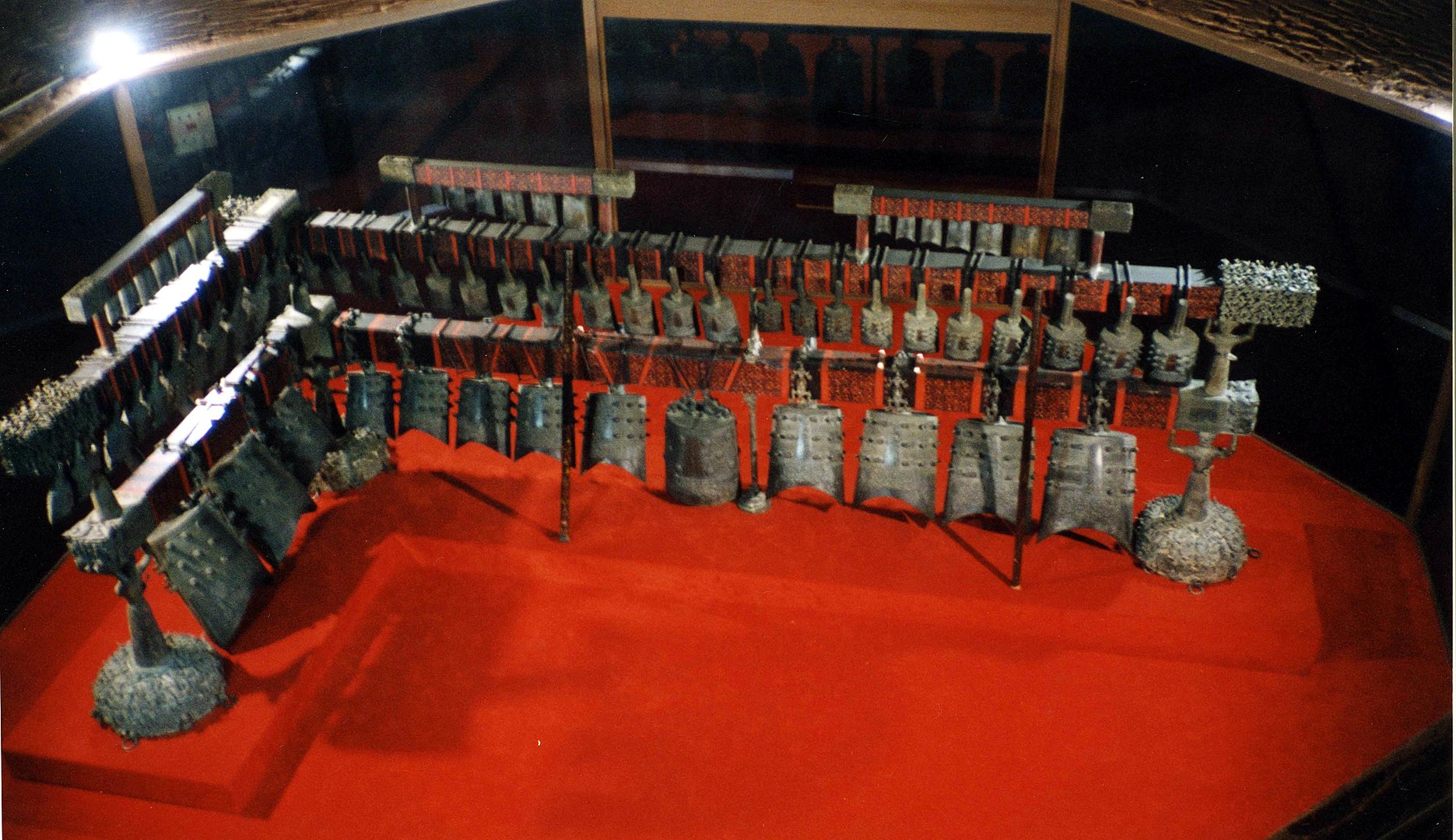How the bell is played
523 views · Organized by 线性代数 on 2022-02-24
The bell hangs on the rack and plays. The bell frame was called "(Sǔn, jù)" in ancient times, and the beam was "Sǔn", which was also used as bamboo shoots and cobalt; There is a "tarsal seat" under the column for stability.
Due to the different number of hanging bells in each group (set), there are many kinds of frame systems. Such as one beam and two columns (the bells of the Chu Tomb in Xinyang, Henan, 13 pieces); two beams and five columns (the bells of the tomb No. 1 Tianxingguan in Jiangling, Hubei, 22 pieces); pieces); seven beams and fourteen columns in the shape of a curved ruler (the bell from the tomb of Zenghou Yi, sixty-four pieces), etc. Some bells were unearthed with hooks, piercing nails and bells and sticks that struck the bell body. Yong bells are hung with bell hooks or ropes, and button bells are hung with nails.
To play small and medium chimes, use T-shaped wooden chimes; to play large bells, use long round wooden sticks. Take the tomb of Marquis Yi of Zeng as an example. Its T-shaped bell is 62 cm long and the wooden stick is 215 cm long.
So far, the number of chimes discovered in the pre-Qin period has been quite considerable. According to incomplete statistics in 1988, there are 116 batches, 174 groups, and 903 pieces (the type, group, and pieces are not counted) inside). Among them, there are about 400 inscriptions.
Due to the different number of hanging bells in each group (set), there are many kinds of frame systems. Such as one beam and two columns (the bells of the Chu Tomb in Xinyang, Henan, 13 pieces); two beams and five columns (the bells of the tomb No. 1 Tianxingguan in Jiangling, Hubei, 22 pieces); pieces); seven beams and fourteen columns in the shape of a curved ruler (the bell from the tomb of Zenghou Yi, sixty-four pieces), etc. Some bells were unearthed with hooks, piercing nails and bells and sticks that struck the bell body. Yong bells are hung with bell hooks or ropes, and button bells are hung with nails.

To play small and medium chimes, use T-shaped wooden chimes; to play large bells, use long round wooden sticks. Take the tomb of Marquis Yi of Zeng as an example. Its T-shaped bell is 62 cm long and the wooden stick is 215 cm long.
So far, the number of chimes discovered in the pre-Qin period has been quite considerable. According to incomplete statistics in 1988, there are 116 batches, 174 groups, and 903 pieces (the type, group, and pieces are not counted) inside). Among them, there are about 400 inscriptions.
Involving musical instruments
The chime (pinyin: Zhōng) is a traditional Chinese percussion instrument that began in the Bronze Age. The bells are cast in bronze, and different bells are arranged according to size and hang on a huge bell stand. Chimes are often used in combination with chimes; the "gold" in "Sound of Gold and Stone" refers to chimes, and "stone" refers to chimes.
Guess you like
Organized by 赵锦辛 on 2022-03-21
In ancient China, large-scale percussion instruments of the Han nationality, bells and bells arose in the Zhou Dynasty, flourished in the Spring and Autumn Period and the Warring States Period until the Qin and Han Dynasties. China is the first country to manufacture and use musical bells.
read >>
Organized by 碍与暧 on 2022-02-24
By striking the front and side drum parts of the bell, two frequency tones can be produced, that is, a bell has two fundamental frequencies. These two tones are generally the interval of the major and minor thirds. The sounding mechanism of the bell is the vibration of the plate that bends the plate.
read >>
 渝公网安备 50010702504639号
渝公网安备 50010702504639号